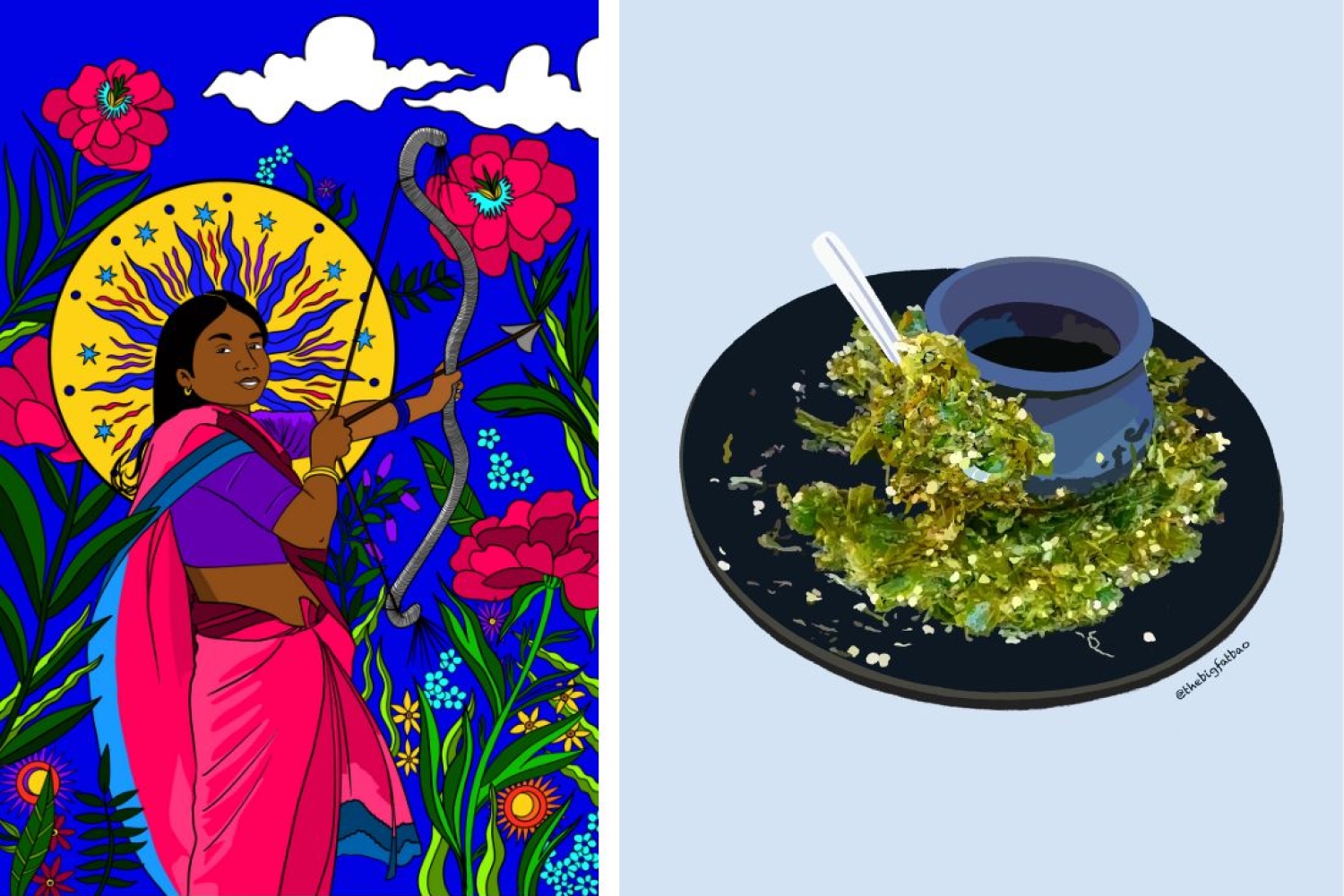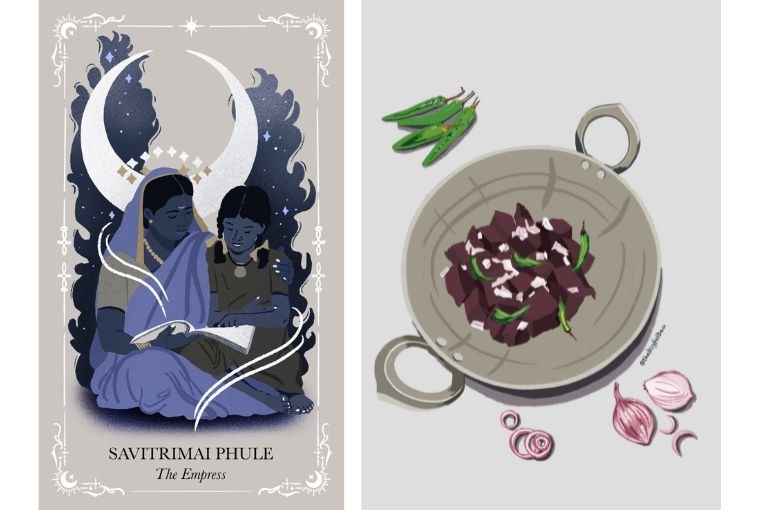
Happy Birthday Phoolan (left) | Caste and Food Series, Thecha (right)

Happy Birthday Phoolan (left) | Caste and Food Series, Thecha (right)
Bao's digital art stems from the marginalisation she faced from the society. Hailing from the Dalit community, Bao strongly establishes the voice of her culture that is often overlooked in the mainstream digital art space and social media. Her work delves into the intersection of caste, gender, food, and contemporary politics. With bright colours and her vision of unabashedly telling stories of her roots and systematic marginalisation, Bao's art is an ode to the Dalit culture and history. In our conversation, she share how the current digital art scene both facilitates and limits her artistic pursuits.
Impact of Digital Art
Technology has definitely made experimentation, information, and techniques of creative production more accessible. However, I don’t think much has changed in terms of art, representation, access to art and creative production, art education, tacit knowledge, affordance, etc. When I was growing up and wanted to be a full-time artist, the cost of art supplies, access to education, cost of education in the field of arts and the sustenance in terms of livelihoods were extremely daunting aspects. After almost 2 decades, although digital art has empowered me to push my creativity, I still feel that access to art spaces, galleries, digital platforms, and experimenting with different media, has been as challenging as before. It has definitely enabled me to challenge traditional forms of art, combine other digital media, and has made possible for my work to have a much wider viewership. But I wouldn’t say it has impacted my life much, because I still begin my process with basic pencil/pen sketches in my sketchbook. So, whether it is my ipad or my sketchbook, there’s not much of a difference. I am, however, more concerned with being able to combine and experiment with different media because I find tacit knowledge far more superior and useful than explicit knowledge which usually comes from sticking to digital art alone.

The Anticaste Tarot Deck, Savitrimai (left) | Caste and Food Series, Lakuti (right)

Where is the justice? (left) | Balipratipada 2023 (right)
Caste and Food

Mahaparinirvan Din 2023